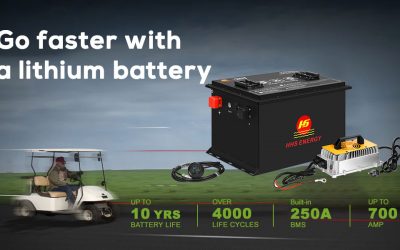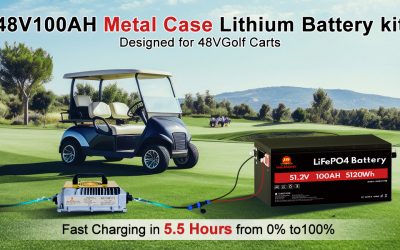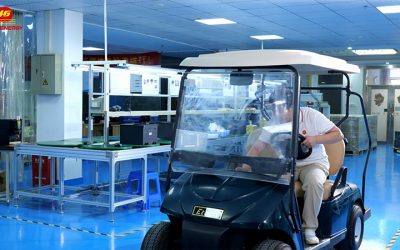Golf Cart Batteries: Choosing the Best Power Source for Your Ride

Your golf cart’s performance—whether it’s cruising the greens, working at a resort, or traversing your neighborhood—hinges on one key component: the battery. Deciding between lead-acid and lithium technologies isn’t just about cost—it’s about efficiency, lifespan, reliability, and long-term value.
Let’s explore the differences, advantages, and practical maintenance tips to help you choose the right battery for your cart.
1. Deep-Cycle Is the Only Way to Go
Golf carts require deep-cycle batteries, not traditional starting (SLI) types. Unlike starting batteries that deliver short bursts for ignition, deep-cycle batteries are designed to deliver steady power over extended periods—perfect for powering your cart.
2. Lead-Acid vs. Lithium: The Performance Showdown
Lead-Acid (Flooded & AGM)
-
Pros: Lower initial cost, widely available.
-
Cons: Heavy, shorter lifespan (3–5 years), requires maintenance such as watering and terminal cleaning.维基百科
Lithium-Ion (LiFePO₄)
-
Pros: Lightweight, maintenance-free, up to 10× cycle life, fast charging, stable voltage output.
-
Cons: Higher upfront cost, sometimes needs a new charger.
For long-term reliability and performance, lithium clearly stands out.
3. Consistent Power vs. Voltage Sag
Lithium batteries deliver stable voltage throughout most of the discharge cycle, while lead-acid voltage drops steadily as capacity diminishes—leading to sluggish performance near the end of the run.
4. Lightweight Makes a Difference
Lithium batteries are significantly lighter. That means your cart is faster, more nimble, causes less wear on turf, and is easier to handle.
5. Fast Charging & No Sulfation
Lithium batteries charge in 2–3 hours compared to 8–10 hours for lead-acid. Plus, unlike lead-acid, they don’t suffer damage from partial charges—meaning you can top off anytime without fear.
6. Fewer Batteries, Same Power
Switching to lithium means you often need fewer batteries to meet the same voltage requirement. For example, a 48V setup may only need one or two lithium packs instead of six to eight lead-acid units—freeing up space and simplifying wiring.
7. Maintenance: A Simple Comparison
| Feature | Lead-Acid | Lithium (LiFePO₄) |
|---|---|---|
| Watering Requirement | Yes (Flooded only) | No |
| Terminal Cleaning | Frequent | Occasional |
| Charging Time | 8–10 hours | 2–3 hours |
| Cycle Life | ~500–1,000 | 2,000–5,000+ |
| Weight | Heavy | Light |
| Replacements | 2–3 units over 10 years | Typically 1 unit needed |
Lithium wins fully in maintenance ease and longevity.
8. Safety and Indoor Use Benefit
Lead-acid batteries can emit hydrogen gas and require proper ventilation to avoid fire risk. In contrast, lithium batteries are sealed and safe for indoor or enclosed use.
9. Long-Term Savings: It Pays Off Over Time
Despite the higher initial price, lithium batteries often cost less over time due to longer lifespan, lower maintenance, and better performance. Many users report they “pay for themselves” after one replacement cycle of lead-acid.
10. Tips for Choosing the Right Battery
-
Match battery voltage (36V, 48V, 72V) to your cart’s specs.
-
Choose reputable brands with solid warranties.
-
If switching to lithium, ensure your charger is compatible.
-
Monitor battery health with a quality battery meter—especially helpful in lithium setups.
Final Thoughts
If you’re after quiet, lightweight performance with longer run times, faster charging, and minimal upkeep, lithium-ion (LiFePO₄) is the future of golf cart power. While lead-acid still offers a lower entry cost, for frequent use and long-term value, lithium delivers unmatched advantages.





